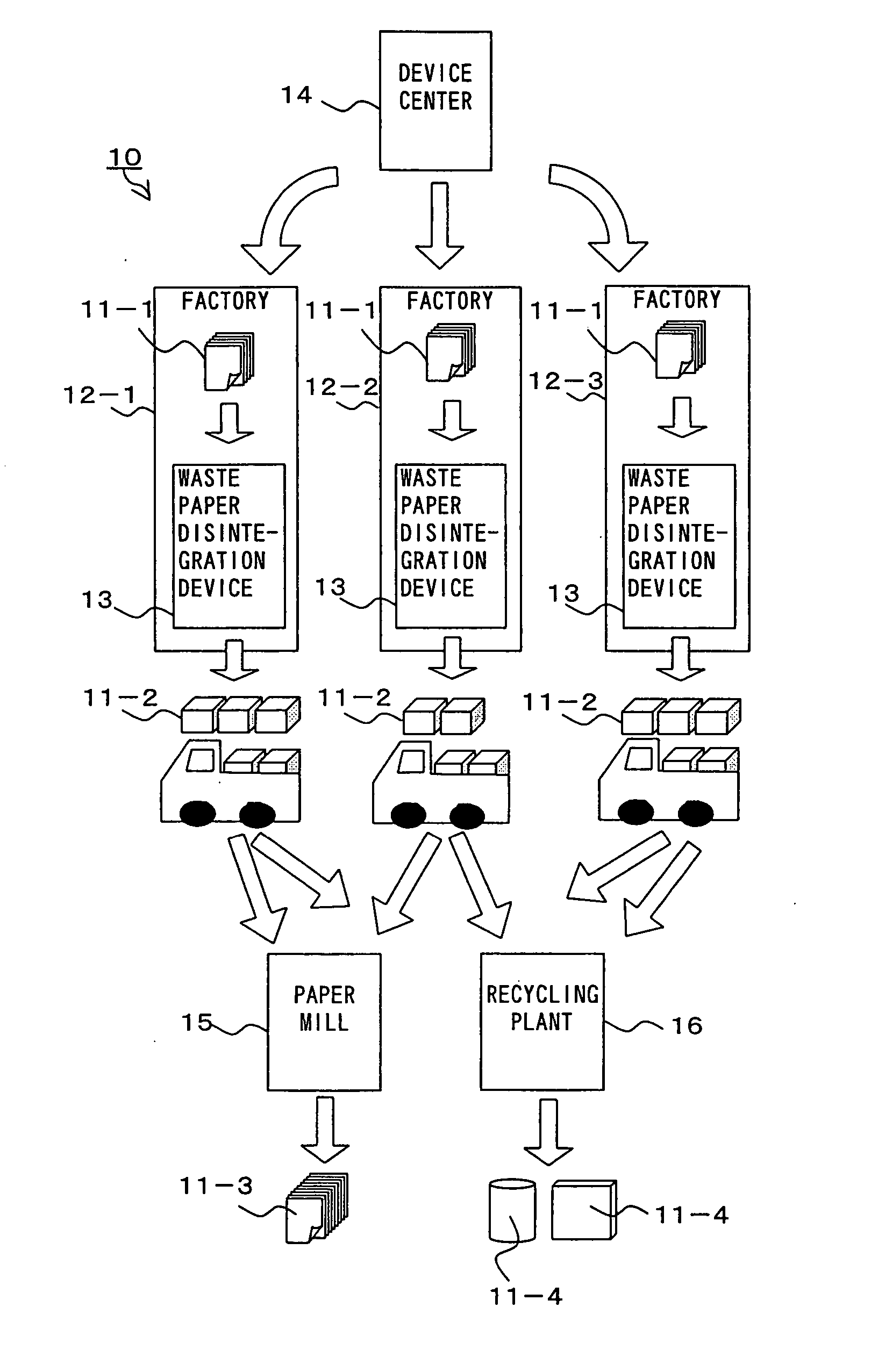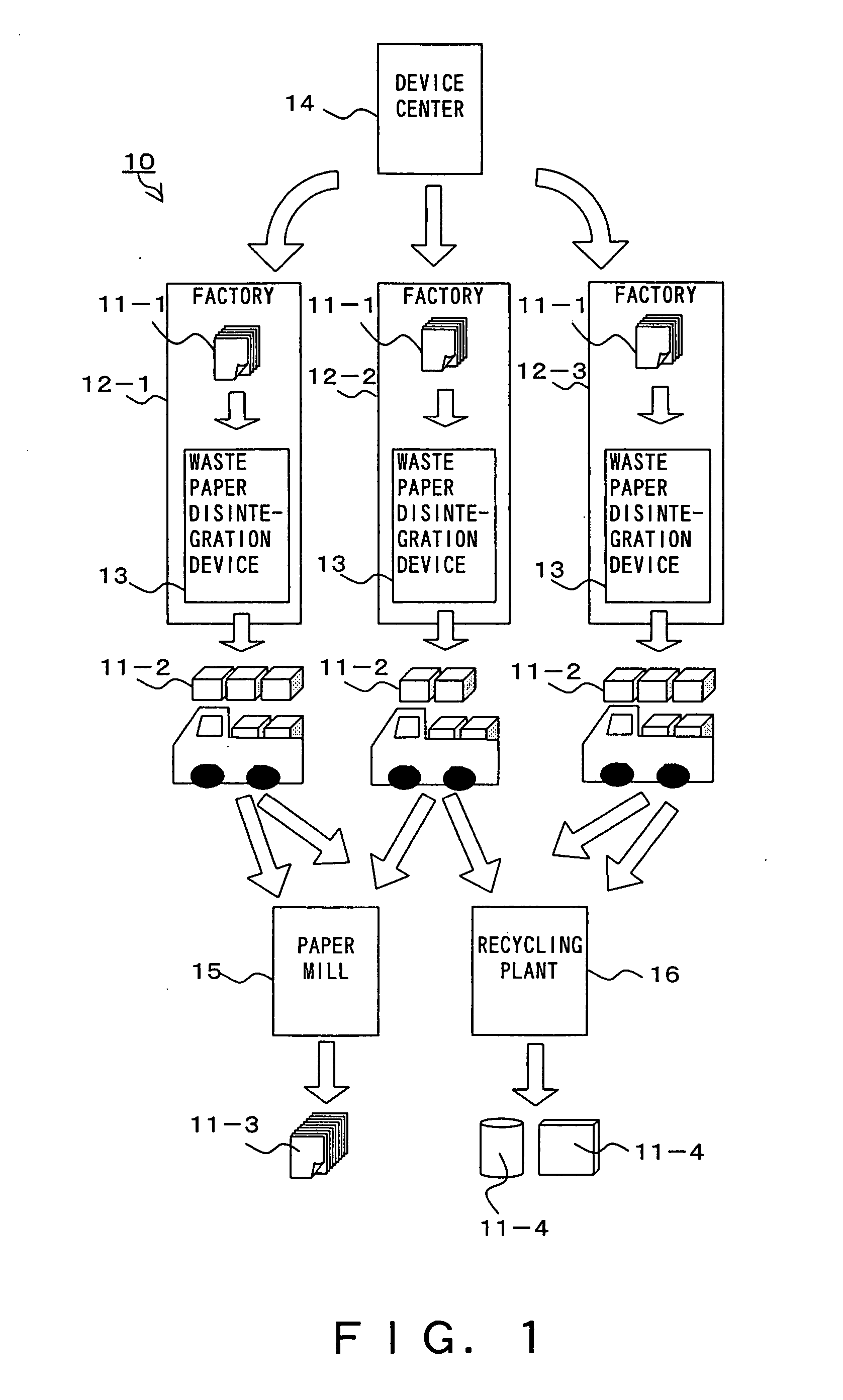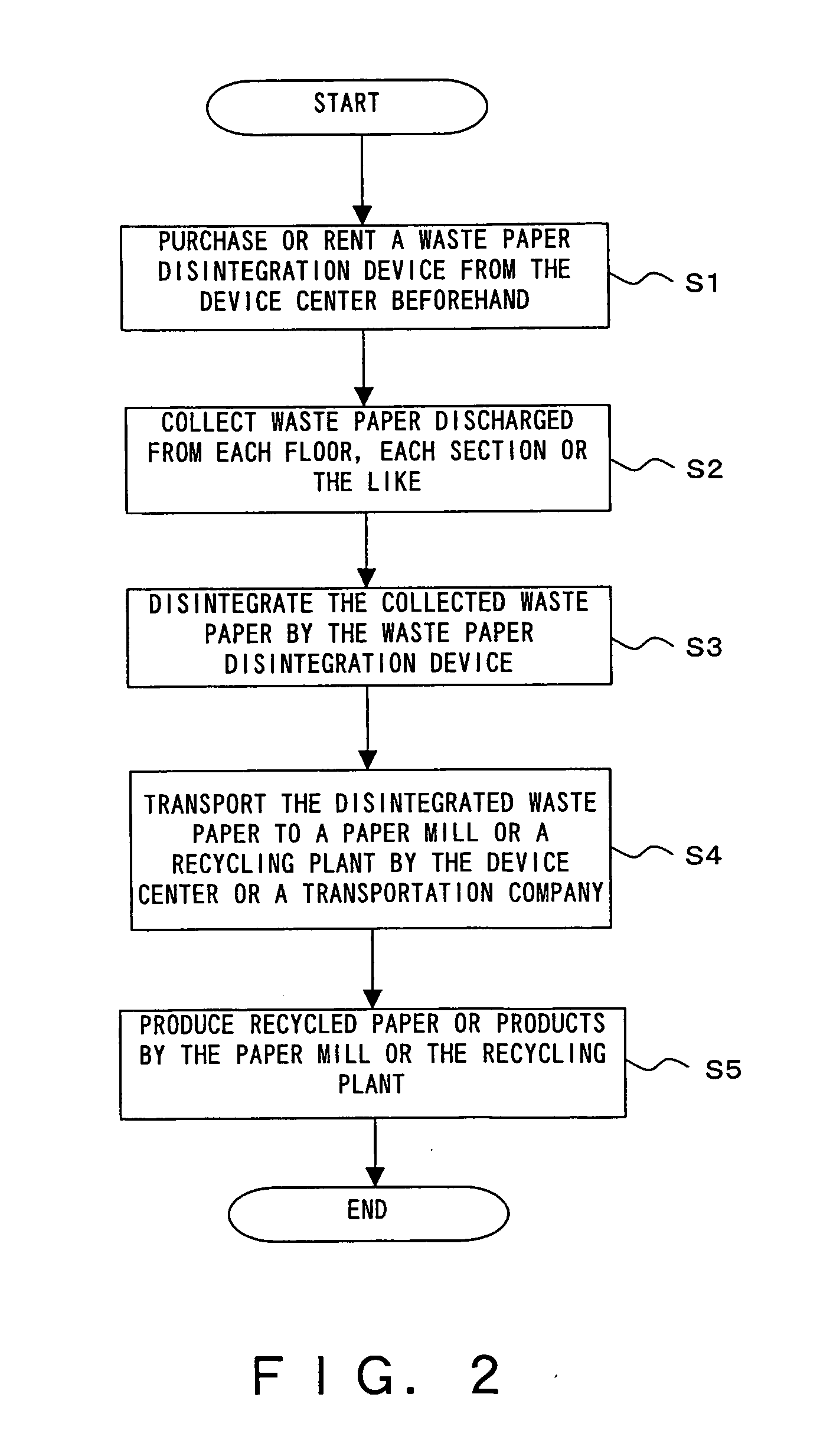Waste paper fibrous material utilization system and waste paper disintegration apparatus
a utilization system and waste paper technology, applied in the field of waste paper fibrous material utilization system, can solve the problems of difficult to efficiently disintegrate waste paper, unsanitary methods, and no dust nor static electricity, and achieve the effect of easy recycling of waste paper
- Summary
- Abstract
- Description
- Claims
- Application Information
AI Technical Summary
Benefits of technology
Problems solved by technology
Method used
Image
Examples
Embodiment Construction
[0186] The preferred embodiments of the present invention are described below with reference to the drawings.
[0187]FIG. 1 shows the basic configuration of the waste paper fiber utilization system in the preferred embodiment of the present invention.
[0188] A waste paper fiber utilization system 10 shown in FIG. 1 comprises a plurality of factories 12 (12-1, 12-2, 12-3, . . . ), a waste paper disintegration device 13 for disintegrating waste paper 11-1, such as used computer paper, copied paper, facsimile paper, newspapers, leaflets, pamphlets, magazines, cardboard, corrugated cardboard and the like, discharged from the factory 12 into fibers 11-2, a device center 14 for performing the sales, rental, maintenance and the like, of the waste paper disintegration device 13, a paper mill 15 for recycling the fibers 11-2 to paper 11-3 and a recycling plant 16 for recycling the fibers 11-2 to products 11-4, such as heat insulating materials, cushions and the like. In the waste paper fiber ...
PUM
| Property | Measurement | Unit |
|---|---|---|
| length | aaaaa | aaaaa |
| angle | aaaaa | aaaaa |
| angle | aaaaa | aaaaa |
Abstract
Description
Claims
Application Information
 Login to View More
Login to View More - R&D
- Intellectual Property
- Life Sciences
- Materials
- Tech Scout
- Unparalleled Data Quality
- Higher Quality Content
- 60% Fewer Hallucinations
Browse by: Latest US Patents, China's latest patents, Technical Efficacy Thesaurus, Application Domain, Technology Topic, Popular Technical Reports.
© 2025 PatSnap. All rights reserved.Legal|Privacy policy|Modern Slavery Act Transparency Statement|Sitemap|About US| Contact US: help@patsnap.com



